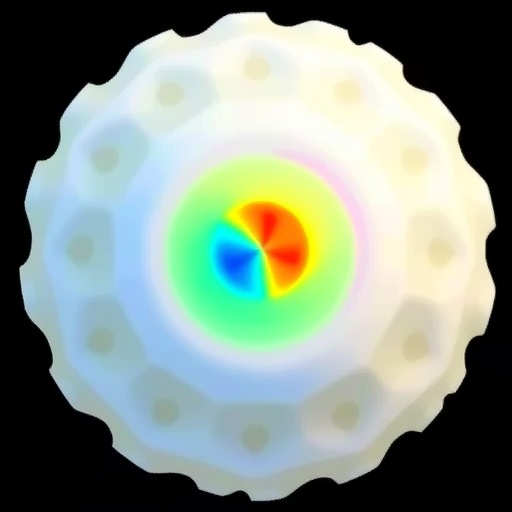In the realm of fuel cell technology, a groundbreaking advancement has emerged that promises to enhance the efficiency and performance of proton exchange membrane fuel cells (PEMFCs). Developed by the innovative researcher Miroslav Ćalasan, this new approach employs an inventive numerical inversion strategy based on the modified Mann PEMFC model, utilizing Lambert W iterations coupled with a bisection backup method. This has significant implications for the field, as the ability to efficiently and accurately model fuel cell performance is crucial for the ongoing quest to develop more efficient and sustainable energy solutions that harness the potential of hydrogen fuel cells.
Peering into the intricacies of the modified Mann PEMFC model reveals complex relationships among various parameters that dictate the cell’s operational efficiency. The model itself is an essential tool for understanding how various material and operational factors impact performance and longevity. As PEMFCs transition towards broader commercial applications, designers and engineers must have robust and reliable models to optimize the design and operating conditions of these systems. Ćalasan’s work serves as a pivotal contribution to this foundational knowledge base.
One of the key innovations presented by Ćalasan is the utilization of Lambert W functions, which arise from solutions of exponential equations and can handle the intricate mathematical formulations typical in these fuel cell models. The application of Lambert W iterations allows for a more precise solution process with respect to parameters that are often difficult to linearize or approximate. By plugging these values into the modified Mann model, researchers can achieve enhanced performance predictions that closer reflect real-world conditions.
Along with the Lambert W approach, the presence of a bisection backup mechanism sharpens the numerical inversion’s reliability. When initially posed problems within numerical computations yield solutions that are not consistent, the bisection method offers an alternative pathway to refine the answer through iterative approximation. This dual-method strategy not only increases accuracy but also enhances computational stability, which is critical when modeling the unstable dynamics often observed in fuel cells during operation.
The implications of this methodological advancement extend far beyond theoretical explorations. In practical terms, a more accurate model means that manufacturers and researchers can undertake systematic optimization of fuel cell designs. By enhancing the model’s predictive capabilities, operators can fine-tune performance variables, potentially leading to reduced material costs and improved productivity. As fuel cells become an increasing part of global energy solutions, these benefits will resonate across industries looking to adopt cleaner technologies.
Moreover, this cutting-edge research doesn’t occur in isolation; it is part of a larger trend in which computational techniques are driving breakthroughs in energy technologies. With pressure for sustainability mounting globally, integrating advanced computational techniques into energy systems is crucial. Ćalasan’s approach reflects a significant shift towards leveraging mathematical rigor in addressing practical energy challenges.
From a research perspective, the work also opens up avenues for further studies. By establishing a new standard in numerical approaches for fuel cell modeling, other researchers can build upon Ćalasan’s findings to explore different variations and extensions of the modified Mann model. This can potentially lead to even more sophisticated tools that can accommodate new materials or operating environments, setting the stage for innovations in fuel cell technology across various applications.
In terms of the larger picture, advancements like Ćalasan’s model are essential for moving toward a hydrogen economy. As governments and private enterprises increase investments in hydrogen production, storage, and technology, improved fuel cell models will help realize the full potential of hydrogen as a clean energy source. Fuel cells offer the promise of dramatically reducing greenhouse gas emissions, and each enhancement in efficiency provides another step toward a more sustainable future.
Furthermore, researchers excitedly note how enhanced PEMFCs may drive the adoption of hydrogen-powered vehicles, which have been historically limited by concerns over range and efficiency. Improved modeling tools enable a more intricate understanding of depletion mechanisms and performance fluctuation in these cells. Hence, manufacturers can develop vehicles with not just greater range, but also quicker refueling times, spurring consumer interest and uptake.
Fuel cells are also critical in stationary energy applications and portable power generation. This versatility implies that as models become more refined, they can be tailored to meet specific needs, ensuring that energy demands in homes, industries, and even in the wake of natural disasters can be more readily fulfilled by innovative hydrogen-based solutions.
As the dialogue surrounding renewable energy intensifies, studies such as Ćalasan’s provide key insights into enhancing the viability of PEMFCs. Innovations in modeling techniques translate directly into breakthroughs in performance, setting a foundation for future developments that could lead to more compact, affordable, and user-friendly fuel cell systems.
In conclusion, Miroslav Ćalasan’s innovative numerical inversion of the modified Mann PEMFC model illuminates a crucial path towards refining fuel cell technology. As researchers rally around this meticulous approach, the collective advancement in sustainable energy technologies could potentially reshape how we conceive of and utilize hydrogen as a primary energy source.
Subject of Research: Innovative numerical methods for modeling fuel cell performance.
Article Title: Innovative numerical inversion of the modified Mann PEMFC Model via Lambert W iterations with bisection backup.
Article References:
Ćalasan, M. Innovative numerical inversion of the modified Mann PEMFC Model via Lambert W iterations with bisection backup.
Ionics (2025). https://doi.org/10.1007/s11581-025-06726-y
Image Credits: AI Generated
DOI: https://doi.org/10.1007/s11581-025-06726-y
Keywords: Fuel Cells, PEMFC, Numerical Inversion, Lambert W Function, Bisection Method, Energy Efficiency, Renewable Energy, Hydrogen Technology, Model Optimization.




